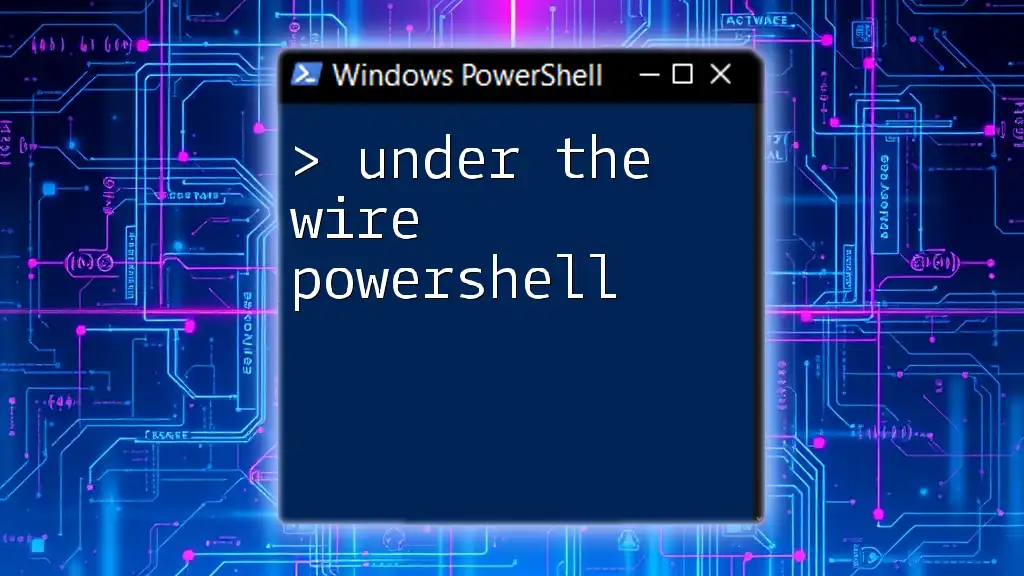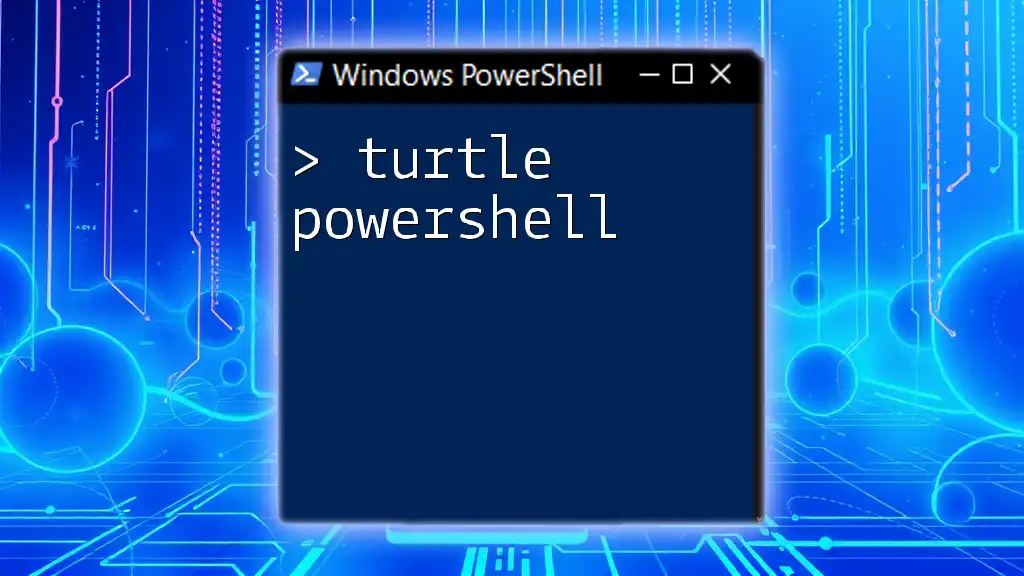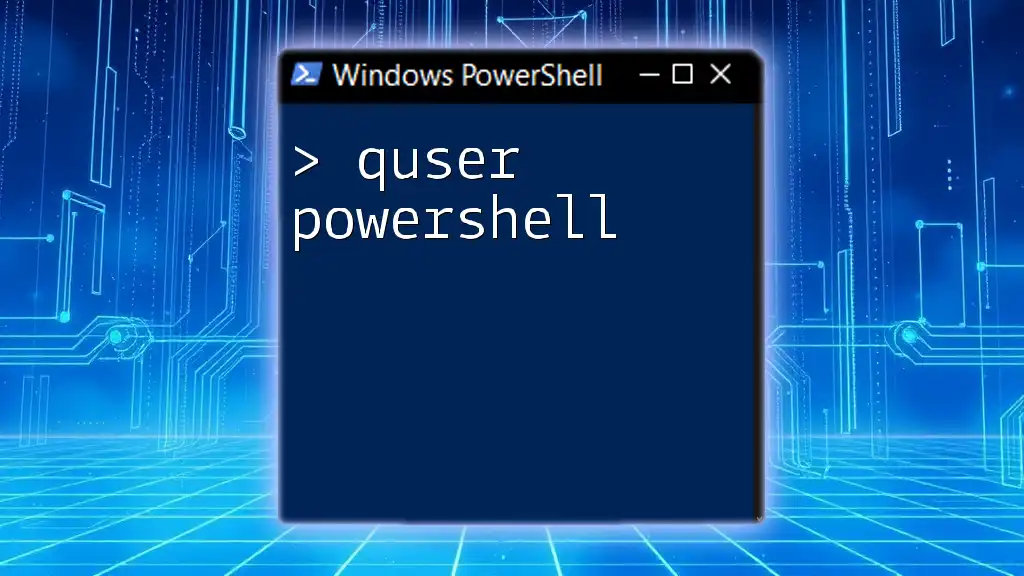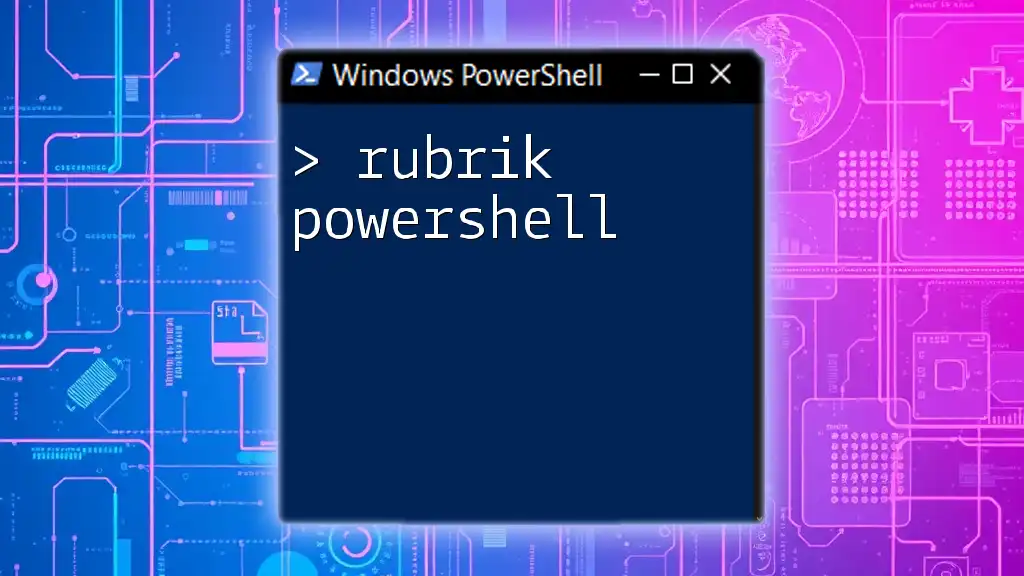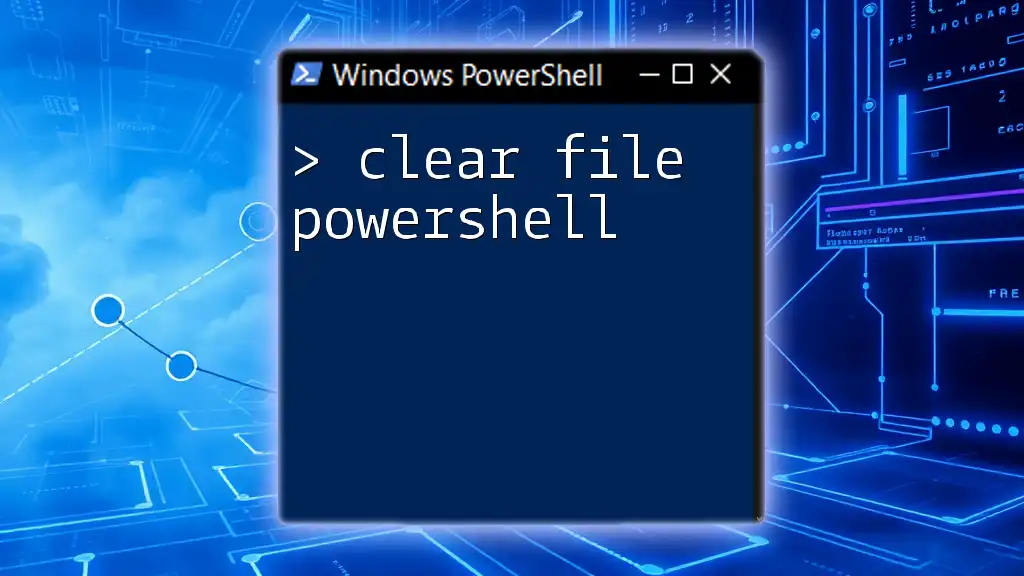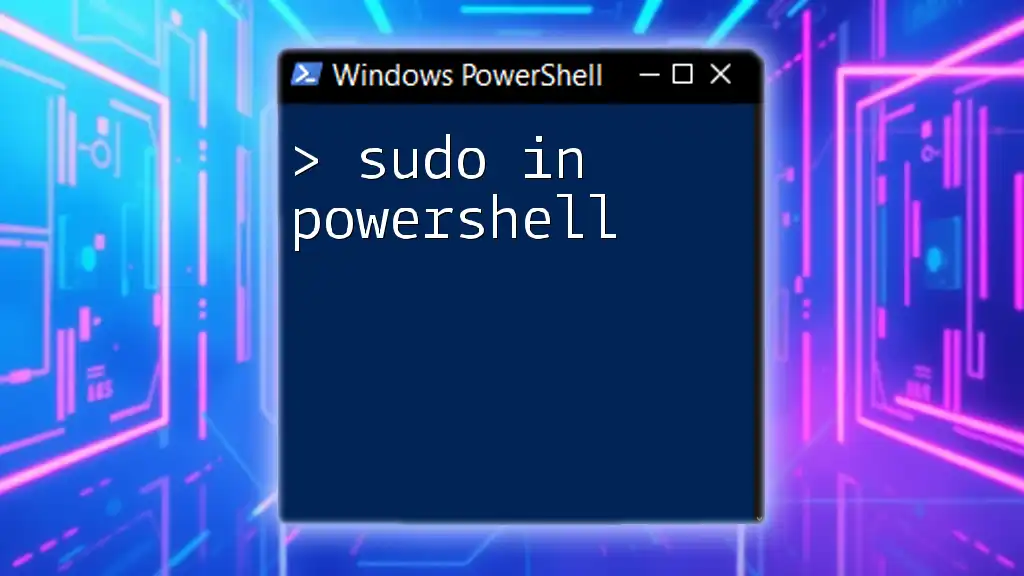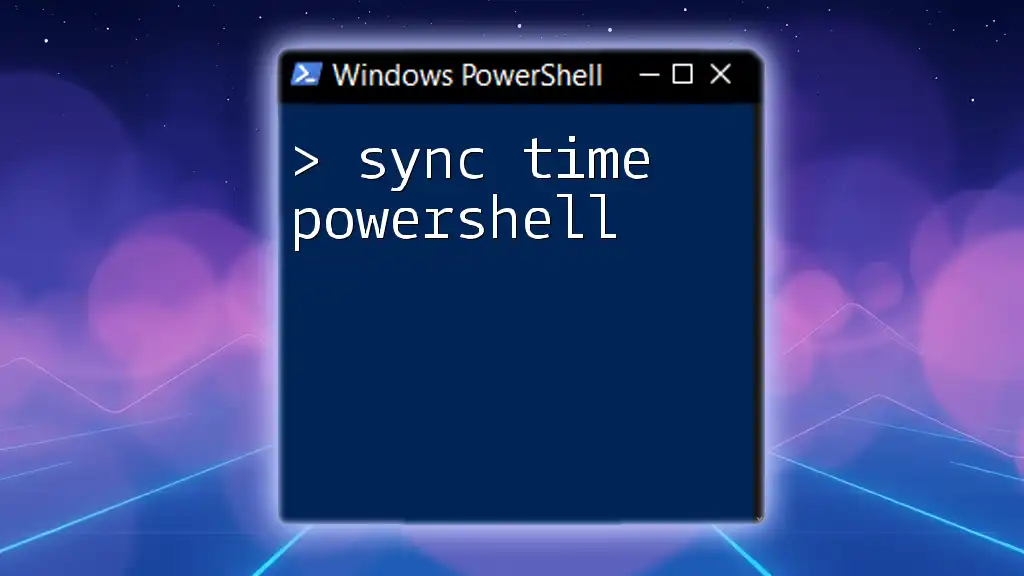"Under the wire PowerShell" refers to utilizing PowerShell commands in a streamlined and efficient manner, allowing users to perform tasks swiftly and with minimal overhead.
Here's a quick example of a PowerShell command that retrieves system information:
Get-ComputerInfo | Select-Object CsName, WindowsVersion, WindowsBuildLabEx
Understanding PowerShell Basics
What is PowerShell?
PowerShell is a powerful automation tool and scripting language designed specifically for system administration. It provides an interactive command-line interface as well as scripting capabilities that allow administrators to automate repetitive tasks, manage configurations, and control systems from a single viewpoint.
How PowerShell Works
At the heart of PowerShell's functionality are cmdlets, which are specialized .NET classes designed to perform specific tasks. Cmdlets are the building blocks of PowerShell scripts. In addition to cmdlets, PowerShell also supports scripts (collections of cmdlets) and modules (packages of cmdlets and functions).
One of the standout features of PowerShell is its pipeline, which enables you to chain cmdlets together, passing the output of one cmdlet directly into the next. This feature allows for efficient processing and reduces the need for temporary variables to hold data.

The Philosophy of Under-The-Wire PowerShell
What is Under-The-Wire PowerShell?
“Under the wire PowerShell” refers to the practice of executing tasks quickly and efficiently, usually in a live or urgent scenario. This approach emphasizes being nimble in executing commands to achieve results without unnecessary delays or complex setups.
Benefits of Under-The-Wire Practices
Adopting under-the-wire techniques can significantly enhance your productivity. By focusing on quick commands and automation, you can save substantial time, streamline workflows, and reduce clutter in your scripts. This efficiency is vital in environments where rapid response is necessary, such as system troubleshooting or deployment.

Key Techniques for Implementing Under-The-Wire PowerShell
Using Aliases
Aliases in PowerShell are shorthand versions of cmdlet names that can be used to simplify command entry. They save time and keystrokes, especially for frequently used commands. For example, instead of typing out `Get-ChildItem`, you can use the alias `dir`:
dir
Aliased commands provide a quick way to execute actions without typing long command names, boosting efficiency significantly.
Leveraging the PowerShell Pipeline
The PowerShell pipeline allows you to link multiple cmdlets together seamlessly. This is a fundamental aspect of under-the-wire PowerShell, enabling you to extract and transform data efficiently. For instance, the following example retrieves processes that are consuming a high amount of CPU and sorts them in descending order:
Get-Process | Where-Object { $_.CPU -gt 100 } | Sort-Object CPU -Descending
This single line of code combines several function calls to generate the desired result, showcasing the power of the pipeline.
Creating Snippets for Common Tasks
To enhance efficiency, it's advisable to create reusable code snippets for common tasks. Functions can serve as handy shortcuts for repetitive operations. Here's an example of a simple function to back up a directory:
Function Backup-Directory {
param($source, $destination)
Copy-Item -Path $source -Destination $destination -Recurse
}
By calling `Backup-Directory`, you can quickly execute the backup without having to remember the entire command syntax each time.
Utilizing Background Jobs
For tasks that are time-consuming, leveraging background jobs can be beneficial. Background jobs allow you to run tasks asynchronously, freeing up your terminal for other commands. Here's how to start a background job that retrieves application event logs:
Start-Job -ScriptBlock { Get-EventLog -LogName Application }
This technique is particularly useful during long-running tasks or when you need to perform concurrent operations.
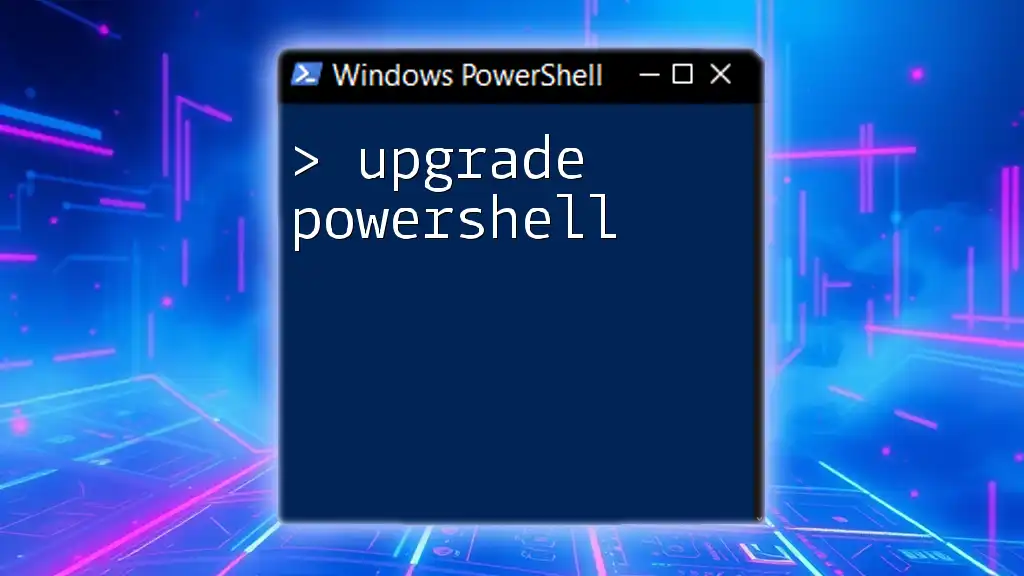
PowerShell Best Practices for Efficiency
Writing Concise Scripts
Keeping your scripts concise and focused is crucial. Aim to eliminate unnecessary code while maintaining clarity. Effective comments and documentation can also help anyone who reads your script, including yourself in the future.
Error Handling
Effective error handling is key in under-the-wire PowerShell to ensure that scripts remain robust and stable while running. Use the `Try-Catch` blocks to handle exceptions gracefully without halting the entire script. Here’s an example:
try {
Get-Item "C:\NonExistentFile.txt"
} catch {
Write-Host "An error occurred: $_"
}
This practice allows you to manage errors smoothly, informing you of issues without interrupting your workflow.
Modularity in Scripts
Creating modular scripts enhances maintainability. By structuring scripts into functions or modules, you promote reusability and simplify debugging. Organizing code in sections enables more straightforward identification of issues and fosters a clearer understanding of overall functionality.

Real-World Applications of Under-The-Wire PowerShell
System Administration
Under-the-wire PowerShell techniques are immensely beneficial for system administration tasks. Tasks like managing user accounts, adjusting configurations, and deploying software can all be expedited through rapid command execution.
For example, remotely accessing and managing multiple servers can be efficiently executed with PowerShell Remoting, allowing admins to run scripts across multiple systems without the need for manual logins.
Monitoring and Reporting
Monitoring system health and generating reports become easier with under-the-wire automation. You can create scripts to check system performance metrics such as CPU usage or disk space. For instance, here's a quick command to monitor CPU usage:
Get-WmiObject Win32_Processor | Select-Object Name, LoadPercentage
This command quickly retrieves the CPU load, allowing you to identify performance bottlenecks rapidly.
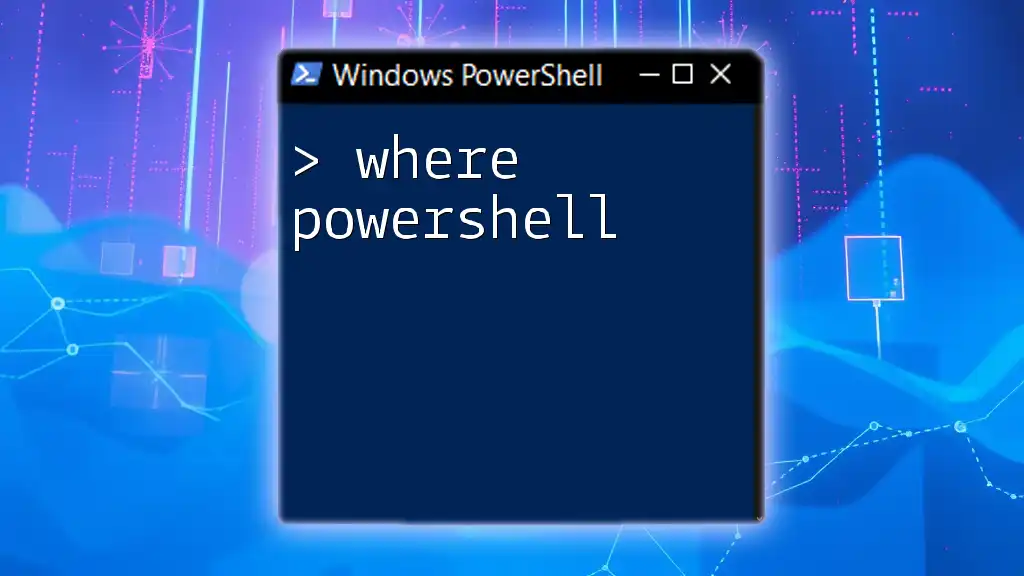
Advanced Techniques for Power Users
Creating Custom Cmdlets
If you're looking to go even further in your PowerShell proficiency, consider developing custom cmdlets. Custom cmdlets allow you to define specific functions that can be reused across your scripts. With custom cmdlets, you can encapsulate complex logic while maintaining simplicity in invoking them.
Integration with Other Tools
PowerShell’s versatility extends to integrating with various tools and APIs. For instance, you can make API calls directly from PowerShell, allowing you to automate tasks across diverse platforms. Here’s a basic example using the `Invoke-RestMethod` cmdlet to make an API request:
$response = Invoke-RestMethod -Uri "https://api.example.com/data" -Method Get
This capability allows PowerShell scripts to interact with external services, adding another layer of functionality.

Conclusion
In sum, adopting under the wire PowerShell techniques can significantly streamline your day-to-day tasks as a system administrator or a user. By employing shortcuts like aliases, the pipeline, and background jobs while following best practices for efficiency and modularity, you can easily enhance your productivity.
Getting started with under-the-wire PowerShell means acknowledging the benefits of speed and efficiency in your workflows. It's time to embrace these techniques and see how they can revolutionize your approach to IT tasks. Explore, experiment, and make these practices a natural part of your PowerShell experience.

